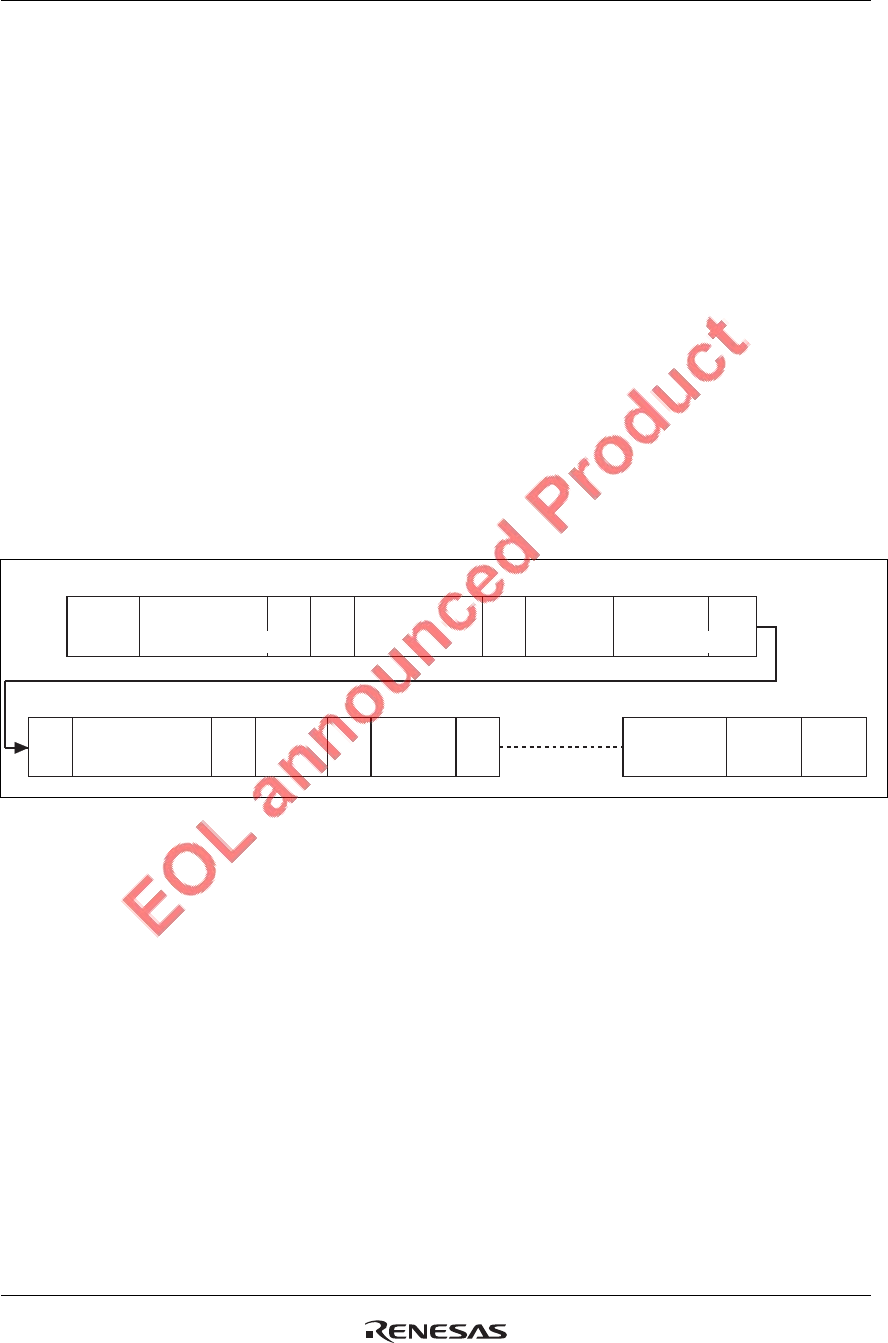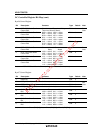
HD151TS207SS
Rev.1.00, Apr.25.2003, page 26 of 38
Renesas clock generator I
2
C Serial Interface Operation (cont.)
2. Read mode
2.1 Controller (host) sends a start bit.
2.2 Controller (host) sends the write address D2 (h).
2.3 Renesas clock generator will acknowledge (Renesas clock gen. sends “Low”).
2.4 Controller (host) sends a begin byte M.
2.5 Renesas clock generator will acknowledge (Renesas clock gen. sends “Low”).
2.6 Controller (host) sends a restart bit.
2.7 Controller (host) sends the read address D3 (h).
2.8 Renesas clock generator will acknowledge (Renesas clock gen. sends “Low”).
2.9 Renesas clock generator will send the byte count N.
2.10 Controller (host) will acknowledge.
2.11 Renesas clock generator will send data from byte M to byte M+N–1.
2.12 When Renesas clock generator sends the last byte, controller (host) will not acknowledge.
2.13 Controller (host) sends a stop bit.
Start bit
1 bit 1 bit 1 bit 1 bit 1 bit7 bits 8 bits 7 bits1 bit
Restart bit
Slave
address
Slave
address
R/W
D2(h)
R/W
D3(h)
Ack
1 bit
Ack
1 bit
Ack
1 bit
Ack
1 bit
Ack
Ack
Begin Count = N
8 bits 1 bit 1 bit
Stop bit
8 bits
Byte M+N–1
8 bits 8 bits
Byte M Byte M+1 Not Ack
Begin Byte = M
Notes: 1. Renesas clock generator is a slave/receiver, I
2
C component. It can read back the data stored in
the latches for the verification.
2. The data transfer rate supported by this clock generator is 100k bits/sec or less (standard
mode).
3. The input is operating at 3.3 V logic levels.
4. The data byte format is 8 bit bytes.
5. To simplify the clock generator I
2
C interface, the protocol is set to use only block-write from
the controller.
6. The bytes must be accessed in sequential order from lowest to highest byte with the ability to
stop after any complete byte has been transferred. The data is loaded until a stop sequence is
issued.
7. At power-on, all registers are set to a default condition, as shown.


















